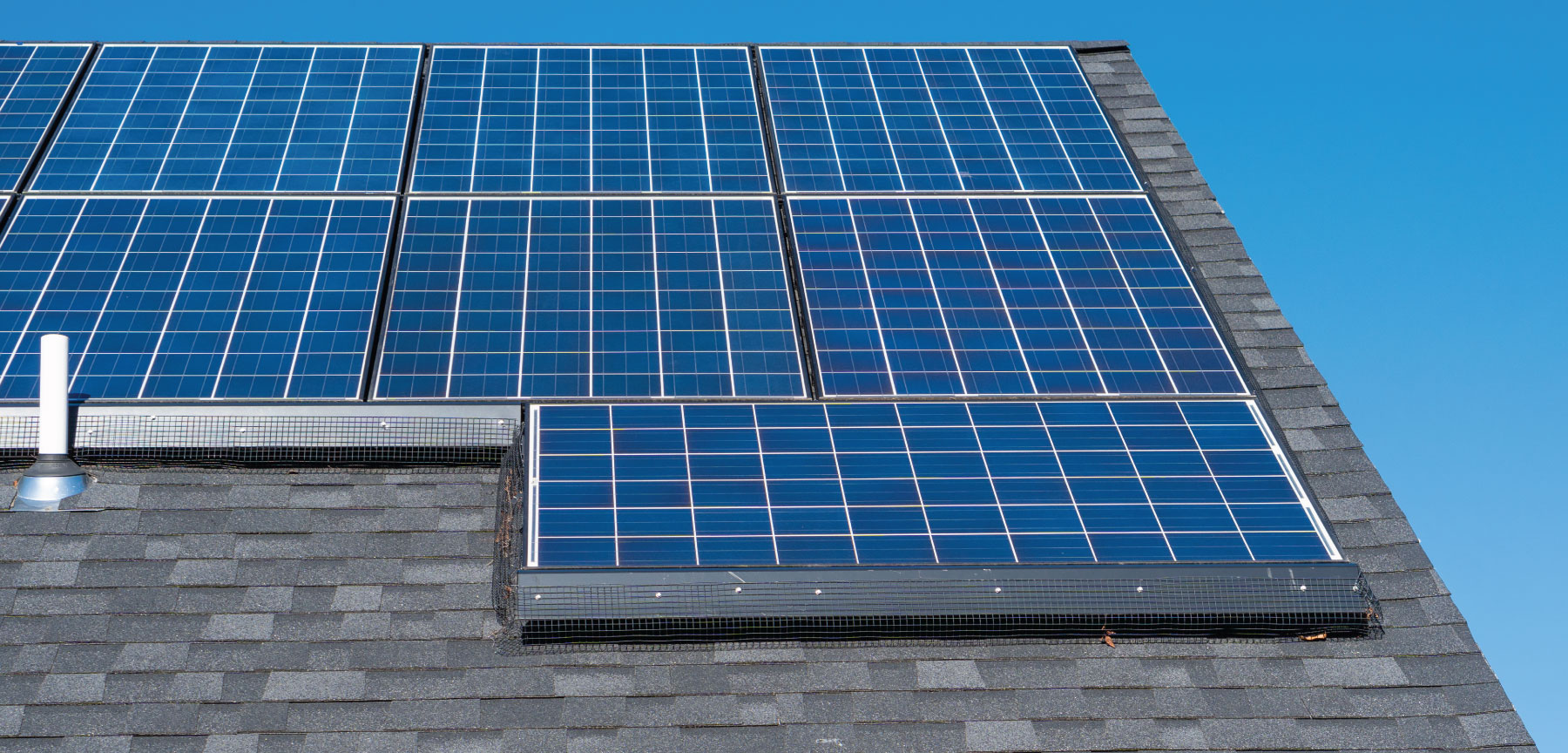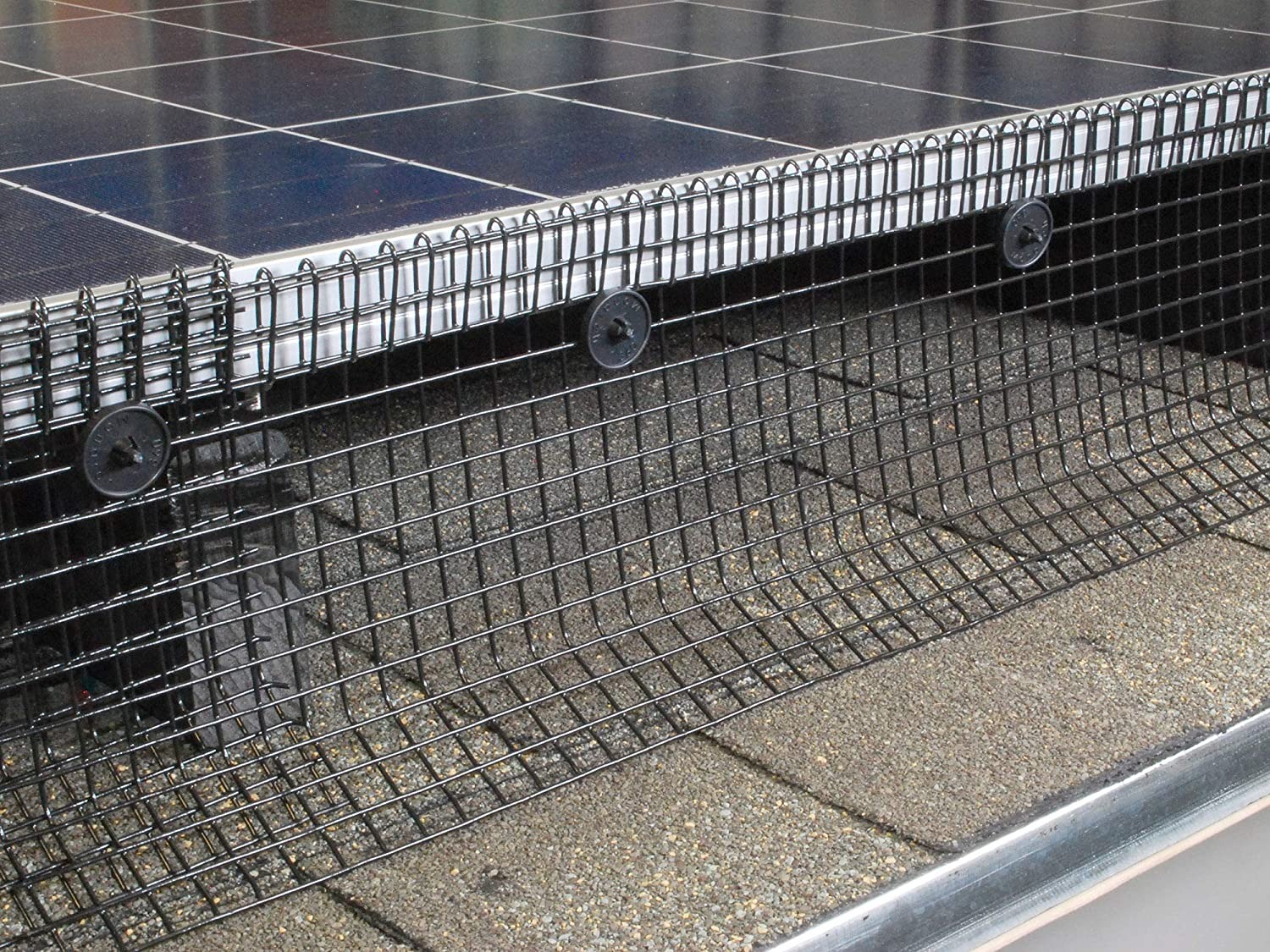
Find out what solar panels cost in your area
Even though most home solar panels are on the roof, high off the ground, there are some small animals like birds and squirrels that can reach the panels and cause unwanted damage.
A solar critter guard is a physical barrier that wraps around your solar array to block these uninvited guests, as well as prevent excess leaves from getting trapped under your panels.
In this blog, we will help you determine why you can benefit from solar critter guards, whether or not you need them with every solar installation, and where you can purchase them.
Why do you need solar panel critter guards?
As a homeowner, the main reason to get solar critter guards is to protect your panels from damage - they can extend their life and save you the hassle of getting a broken panel repaired.
These guards can protect your solar panels from birds, squirrels, and even raccoons.
Squirrels and raccoons can cause some serious damage if they chew through the wires that connect your panels. Similarly, birds can make nests under them.
Not only that, if leaves or twigs get swept under your panels they could become a potential fire hazard due to the dry vegetation getting hot under the panels. Alternatively, leaves could trap moisture under your panels after rain and lead to roof rot or create weak spots in your roof.
Because rooftop panels are held up with a rack, regardless of panel type, they are not flush on the roof's surface. Because of this, critter guards are recommended for each rooftop solar system where animals or excess vegetation can cause damage.
Where can you buy solar critter guards?
Your solar installer can help you with a critter guard installation, or if your panels are already installed, you can find some options online from Amazon that you can install yourself.
The cost of critter guards can range based on which type you decide to go with, with a custom installation ranging from $500 to $2,000 or one from Amazon for as cheap as $40 for 50 feet of netting.
One option that you can purchase is the Maporch solar panel bird wire, currently listed for $39.99.

Image source: Amazon
Made with PVC-coated galvanized steel mesh, the Maporch solar panel bird wire is 6 inches tall and 50 feet long, so make sure to measure the length of your solar panel array to determine if you need to buy more than one wire to cover your whole system.
You would need to install this yourself with fasteners, so while it is a cost-effective option, it could lead to a risky or improper installation.

Image source: Nixalite of America, Inc.
The Solar Trim from Nixalite is another option that you purchase and install yourself with peel-and-stick technology. There are a few options that you can choose from, ranging from 6.75 inches x 48 inches, up to 100 feet in length.
If you want to work with a company that focuses specifically on critter guard installations, you can get a free quote and a more accurate estimate for the cost of the critter guard itself and the cost of installing it on your entire system.
Or if you are getting panels installed, your solar installer will be able to add critter guards to your panels.
What is the worst that can happen if you don’t install critter guards?
One of the most inconvenient issues stemming from a solar panel system without a critter guard is the possibility of birds building a nest underneath your panels, which would lead to you having to pay to have the birds removed - and then install a critter guard.
Or, if an animal chewed through your wires, it could put your entire system out of commission for a few days until you get it repaired.
But, the most dangerous possibility is that the buildup of dry vegetation underneath your panels could ignite due to faulty wires. What normally causes electrical fires is faulty or broken wiring, and with dry leaves stuck under your panel, any faulty wiring could lead to a dangerous fire. While this is a very rare issue, critter guards can help offer peace of mind.
Although there are many benefits to solar panel critter guards, they are not essential and most installations do not have them. But if your neighborhood has a lot of local wildlife like squirrels or nesting birds, they are probably a good addition to your solar array.
Homeowners' insurance typically does not cover damage caused by pests to your solar panels, but you might have some luck with the warranty from your solar panel installer or the manufacturer. However, warranties differ from company to company, so you could be stuck with footing the bill in the event that you need a repair.
What is the right solution for your panels?
Whether you are interested in installing solar panels or need an upgrade for your solar panels to last longer, solar critter guards are a great protective, cost-effective option.
They will keep the wires under the panels free from pests and ensure that leaves and other debris don’t get stuck and cause damage.
If you are new to solar energy, working with a local solar company for your solar panel installation is the best option. Local companies are more likely to be there to help if your solar panels need maintenance over their 25-year lifetime.
Additionally, in the event that your solar installer does not provide and install critter guards themselves, it is likely that they will be happy to refer you to local businesses that they know can deliver a good product.
Key takeaways
-
Solar critter guards keep your solar panels safe from nesting birds, squirrels, and raccoons that could chew through your wires.
-
Vegetation like dry leaves or twigs that are swept under your panels can cause damage and become a fire risk - critter guards can help mitigate this possibility.
-
Solar critter guards are not necessary, but they can help you keep your solar panels protected so that they last longer and are less prone to damage.
Ana is the Marketing & Communications Manager at SolarReviews, working within the solar industry since 2020. With a Master's in Climate and Society and professional experience in marketing, she helps communicate the value of solar to homeowners and build awareness of the SolarReviews brand. On weekends you can find her at the Jersey shore, reading a book from the ever-increasing stack on her side table, or eating food someone else cooked....
Learn more about Ana Almerini